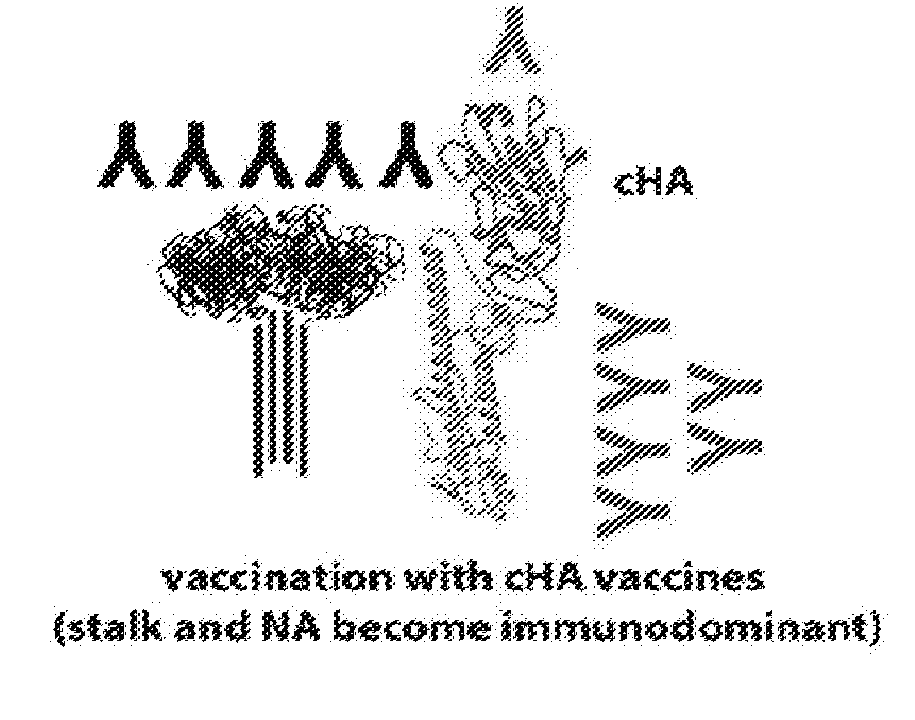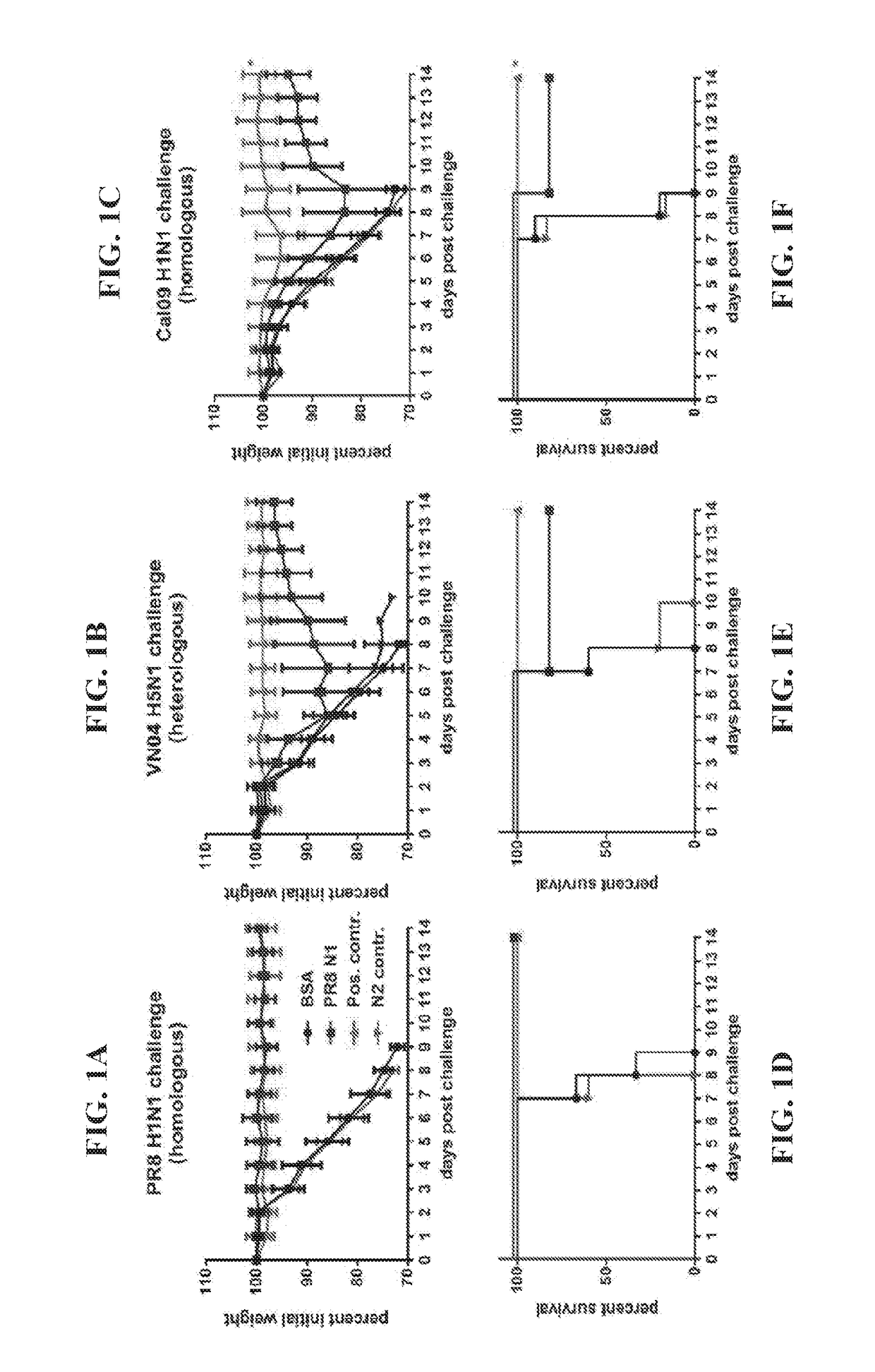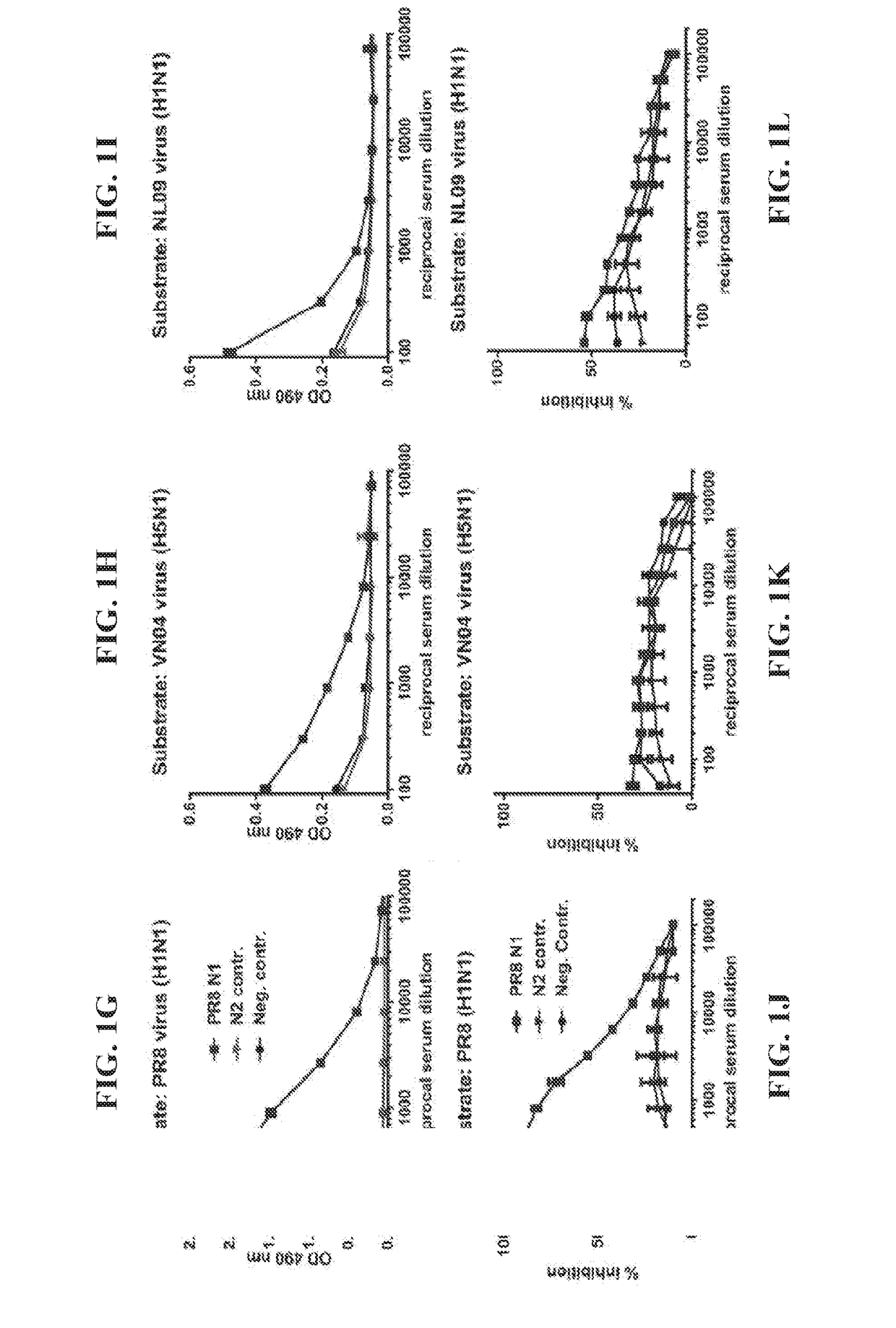Influenza virus vaccination regimens
a technology for influenza viruses and vaccination regimens, applied in the field of influenza virus vaccination regimens, can solve the problems of difficult match, substantial cumulative morbidity and mortality caused by seasonal influenza, influenza viruses are the cause of infrequent pandemics,
- Summary
- Abstract
- Description
- Claims
- Application Information
AI Technical Summary
Benefits of technology
Problems solved by technology
Method used
Image
Examples
experiment 1
[0831]A first group of ferrets are intranasally administered a vaccine formulation comprising a chimeric HA protein comprising an HA globular head domain of an H5 influenza virus (e.g., A / Vietname / 1203 / 04) and a stem domain polypeptide of an H1 (e.g., A / California / 4 / 2009) and a soluble form of influenza virus neuraminidase from A / California / 4 / 2009 (an H1N1 influenza virus). A second group of ferrets are intranasally administered a vaccine formulation comprising a seasonal influenza virus vaccine (e.g., an inactivated influenza virus vaccine or live attenuated influenza virus vaccine) that comprises an HA of an influenza virus H1 and an NA of an influenza virus N1. A certain period of time after administration of the vaccine formulations to the two groups of ferrets, serum from both groups of ferrets is obtained and assessed for antibody titers against an H1N1 influenza virus (e.g., A / California / 4 / 2009 or the 1918 pandemic H1N1 influenza virus) or an H6N1 influenza virus. The antibod...
experiment 2
[0833]A first group of ferrets are intranasally administered a vaccine formulation comprising a non-influenza virus vector (e.g., adenovirus or VSV) comprising chimeric HA and an influenza virus neuraminidase polypeptide from A / California / 4 / 2009 (an H1N1 influenza virus), wherein the chimeric HA comprises an HA globular head domain of an H5 influenza virus (e.g., A / Vietname / 1203 / 04) and a stem domain polypeptide of an H1 (e.g., A / California / 4 / 2009). A second group of ferrets are intranasally administered a vaccine formulation comprising a seasonal influenza virus vaccine (e.g., an inactivated influenza virus vaccine or live attenuated influenza virus vaccine) that comprises an HA of an influenza virus H1 and an NA of an influenza virus N1. A certain period of time after administration of the vaccine formulations to the two groups of ferrets, serum from both groups of ferrets is obtained and assessed for antibody titers against an H1N1 influenza virus (e.g., A / California / 4 / 2009 or th...
PUM
| Property | Measurement | Unit |
|---|---|---|
| time | aaaaa | aaaaa |
| time | aaaaa | aaaaa |
Abstract
Description
Claims
Application Information
 Login to View More
Login to View More - R&D
- Intellectual Property
- Life Sciences
- Materials
- Tech Scout
- Unparalleled Data Quality
- Higher Quality Content
- 60% Fewer Hallucinations
Browse by: Latest US Patents, China's latest patents, Technical Efficacy Thesaurus, Application Domain, Technology Topic, Popular Technical Reports.
© 2025 PatSnap. All rights reserved.Legal|Privacy policy|Modern Slavery Act Transparency Statement|Sitemap|About US| Contact US: help@patsnap.com



